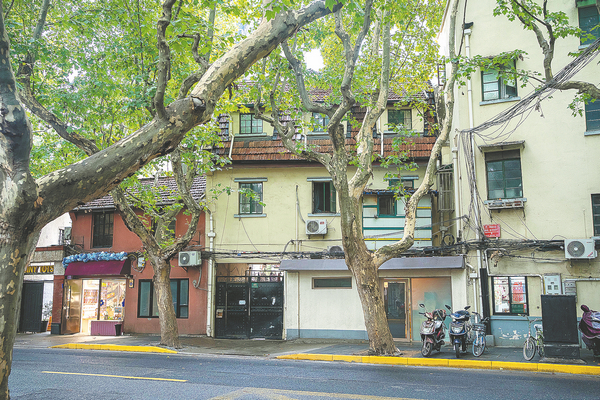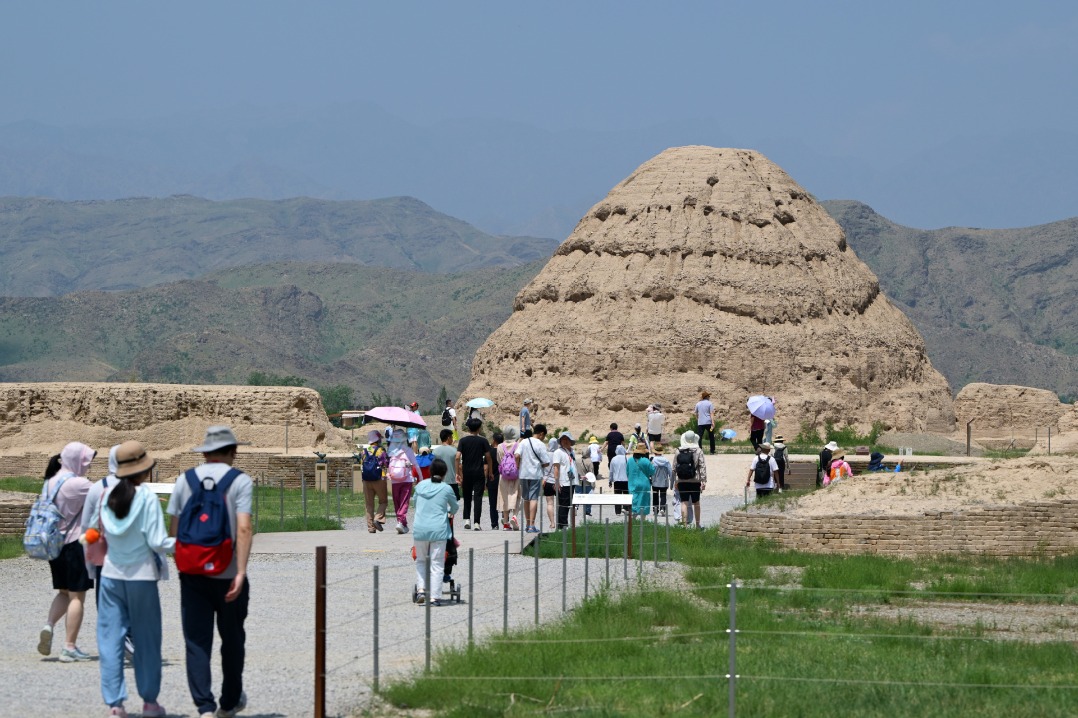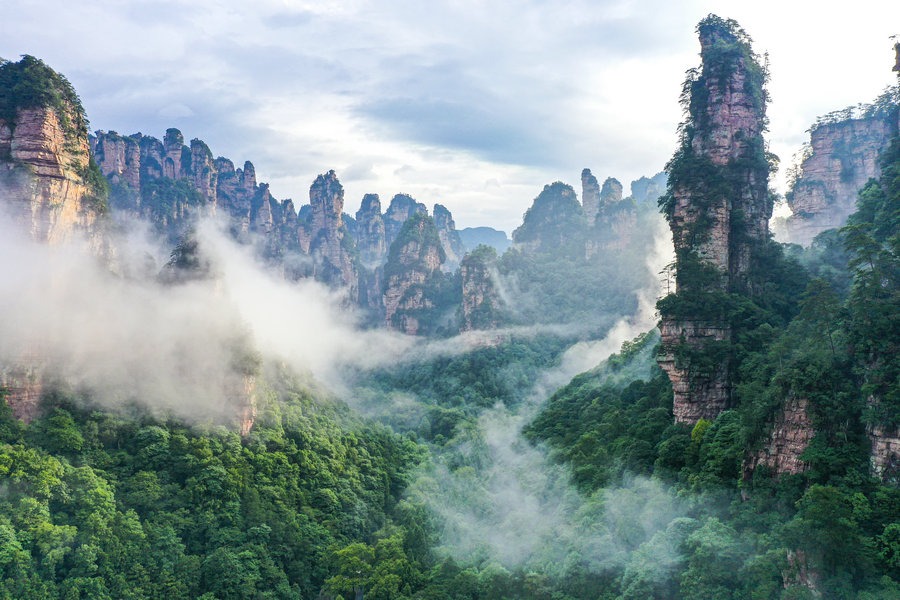Architects renowned legacy stands strong across China


One of the most popular city walk routes in Shanghai is Fuxing Road, located in the downtown area of the city. With sycamore trees giving shade from the sunlight, the street is home to many historic buildings of special significance to China. Among them is the former residence of a legendary Chinese architect.
Zhuang Jun (1888-1990), also spelt as Chuang Tsin, was one of the first professional architects in modern China, and created a series of landmark buildings in Shanghai and other major cities across the country. A founding member of architecture studies in China, he also compiled the first English-Chinese dictionary of architectural engineering terms in the 1950s.
The residence was designed by himself and constructed in 1921.Located at 45 Fuxing Road West in Xuhui district, it is a brick-concrete three-story garden house. It occupies a long and narrow L-shaped area of 306 square meters, consisting of two sets of units. The north house faces the street, connected to the garden in the south with a corridor. The outer wall is light yellow, while the corners are decorated with tooth-shaped red bricks, with bright orange window panes and green railings on the balcony. Two fireplaces were built in the sitting room and a guest room.
Zhuang and his family lived in the house for decades and he died there in 1990. The house was listed as a cultural relic preservation site of Xuhui district in 2017. Today it is still a private residence and visitors can only appreciate it from the outside.
Zhuang was born in Shanghai. His father died when he was only five and the family lived a poor life. After graduating from Nanyang High School in Shanghai, he enrolled in the Tangshan College of Railways and Mines, which provided free tuition and lodging. In 1910 he became one of 47 winners of a scholarship to become the first group of Chinese students to study in the United States. He was accepted by the University of Illinois, the first Chinese student of the American institution.
Soon after his graduation in 1914, Zhuang was called back to China by Tsinghua University, which was preparing to build its first batch of main buildings and dormitories. By that time he was the first Chinese to acquire a bachelor's degree in architecture engineering, and the first one to hold the profession and title of an architect in China, says a biography of Zhuang by the Tsinghua Alumni Association.
In Tsinghua he was given a teaching job as a lecturer in architecture and English, as a resident architect in the university. He helped design the campus as an assistant superintendent for Henry Murphy, a renowned American architect invited to be the chief designer of the new Chinese university.
During the building phase, Zhuang and Charles Lane, the superintendent of construction, oversaw the simultaneous erection of buildings such as the auditorium, library, gym and so on. These were the first batch of buildings in China constructed according to the principles of modern construction science, according to the Tsinghua University Archives.
In 1918 Murphy returned and described the work as "thrillingly satisfactory".
It was believed that Zhuang's thoughts of his alma mater played a part in the similarity between the grand auditorium at Tsinghua University and the Foellinger Auditorium at the University of Illinois.
In the 10 years from 1914-24, people in China gradually became familiar with the duties and responsibilities of the architects and developed increasing public interest for the academic value and importance of the profession. Zhuang had a great influence among the students, inspiring many to study architecture, with some becoming leading figures in China's modern history of the subject, says the Tsinghua alumni association's biography of Zhuang.
During this time he also designed a textile factory in Tianjin, and the new campus of Tangshan Jiaotong University, an institution upgraded from his old high school.
In 1923 Zhuang was sent by Tsinghua University to be the leader of a team of about 100 Chinese students to Columbia University. During a year overseas he extensively explored the architectures new and old in America and Europe, and in 1924 he came back to China where he quit his job at Tsinghua to found his own architect's office in Shanghai.
One of his first projects was the Jincheng Bank building, sitting at the crossing between Hankou Road and Jiangxi Road Middle near the Bund. Completed in 1926, the building featured aesthetics of the European Renaissance and architectural technology of the early 20th century. It convinced the public that Chinese architects were also capable of designing highly artistic large-scale modern buildings.
He embarked on a lustrous career afterwards, creating many projects, mainly bank buildings, in Shanghai, Ji'nan and Qingdao of Shandong province, Harbin in Heilongjiang province, and Dalian in Liaoning, alongside residences and villas.
During this time in China, Zhuang was one of the few Chinese architects strong enough to compete against their western colleagues, who largely dominated China's architectural industry.
In 1927 Zhuang joined hands with some outstanding Chinese colleagues and proposed the establishment of the China Architects' Association (renamed the Chinese Institute of Architects in 1931) and was elected as the first president, and re-elected for the position many times.
Zhuang closed his architect's office after 25 years in the business, and later headed to Beijing, together with a team of about 50 architects and other architectural professionals, at the request of the government to build in the capital city in 1949. He joined the North China Construction Engineering Company, the first State-owned construction design institution of China, and served as the first chief engineer. In 1953 the Central Design Institute of the Ministry of Construction was founded and he went on to be the chief engineer. He came back to Shanghai for health reasons in 1954 and went on to work at the East China Industrial Building Design Institute, before retirement in 1958.
Despite suffering from childhood tuberculosis, Zhuang enjoyed exceptional longevity, living to 102 years old. In the 1980s Shanghai's Huadong Hospital had comprehensive medical examinations done on him, taking his hair and fingernails for research, in an attempt to decipher his secret for a long and healthy life. It was believed that his passion for sports and an active lifestyle were the key to his longevity.

































